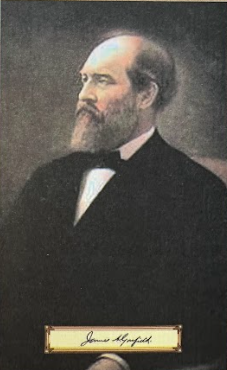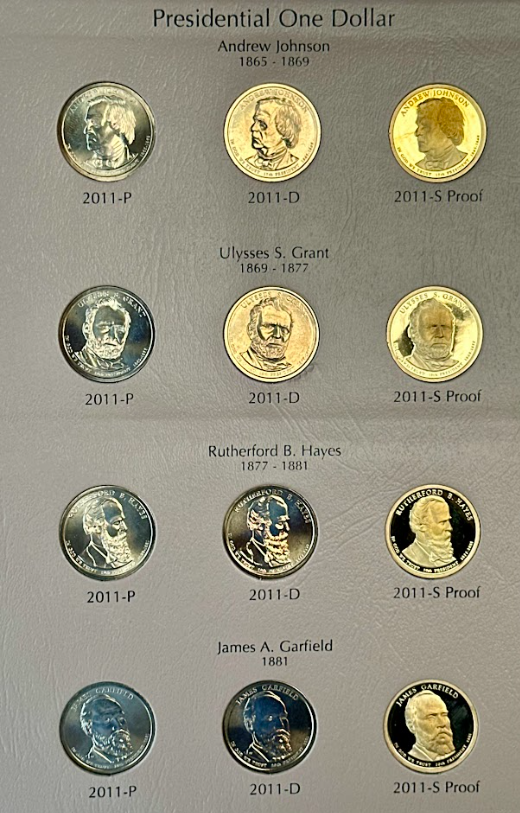This album contains Presidential $1 coins from George Washington (2007) through James A. Garfield (2011). Each coin honors a former U.S. president and features edge-lettered inscriptions. The album includes circulation strikes from both the Philadelphia and Denver Mints, as well as San Francisco Mint proof coins for each issue. This volume begins the Presidential $1 series, released in order of presidential terms.
The Presidency (click to expand)
The Presidential Oath of Office
“I do solemnly swear (or affirm) that I will faithfully execute the Office of President of the United States, and will to the best of my Ability, preserve, protect and defend the Constitution of the United States.”
Qualifications for the Presidency of the United States
Constitution – Article II, Section 1, Paragraph 5:
No person except a natural born Citizen, or a Citizen of the United States at the time of the Adoption of this Constitution, shall be eligible to the Office of President; neither shall any person be eligible to that office who shall not have attained to the age of thirty-five years, and been fourteen years a Resident within the United States.
Origins of the Term “President”
Originally the term referred to someone who “presided” over a meeting or ceremony. By the mid-1700s some American colleges used the title for their heads. When the Constitution introduced the office of President in 1787, the term became the title for the head of state of a republic. Powers and duties vary world-wide: some presidents are largely ceremonial, others can dissolve parliament.
Presidents’ Day
Until 1971, February 12 (Lincoln) and February 22 (Washington) were separate federal holidays. In 1971 President Richard Nixon proclaimed a single holiday—Presidents’ Day—observed on the third Monday of February to honor all past U.S. presidents.
Presidential Politics
As party leader, the President advances the party’s agenda, proposes legislation, and wields the veto. He or she also answers to national and state organizations, political-action committees, donors, volunteers, and elected party officials—creating a web of mutual debts and credits throughout the political process.
Government Administration
Article II grants the President broad executive power, from Commander-in-Chief duties to the authority to appoint (and remove) federal judges and executive-branch leaders. Agency heads serve at the President’s pleasure and are expected to carry out presidential policy directives.
How a President Is Elected: The Conventions
Since the 1950s, state primaries and caucuses choose delegates to the national conventions. During the summer of an election year each party’s convention adopts a platform, then votes—sometimes through many ballots—to choose its presidential and vice-presidential nominees.
How a President Is Elected: The Electoral College
Voters elect state electors, not the President directly. A state’s popular-vote winner receives all its electoral votes. Electors meet in December; results are counted before Congress on January 6. If no candidate wins an electoral majority, the House chooses the President (one vote per state) and the Senate chooses the Vice President. Four times (1824, 1876, 1888, 2000) a candidate with the largest popular vote failed to win an electoral majority.
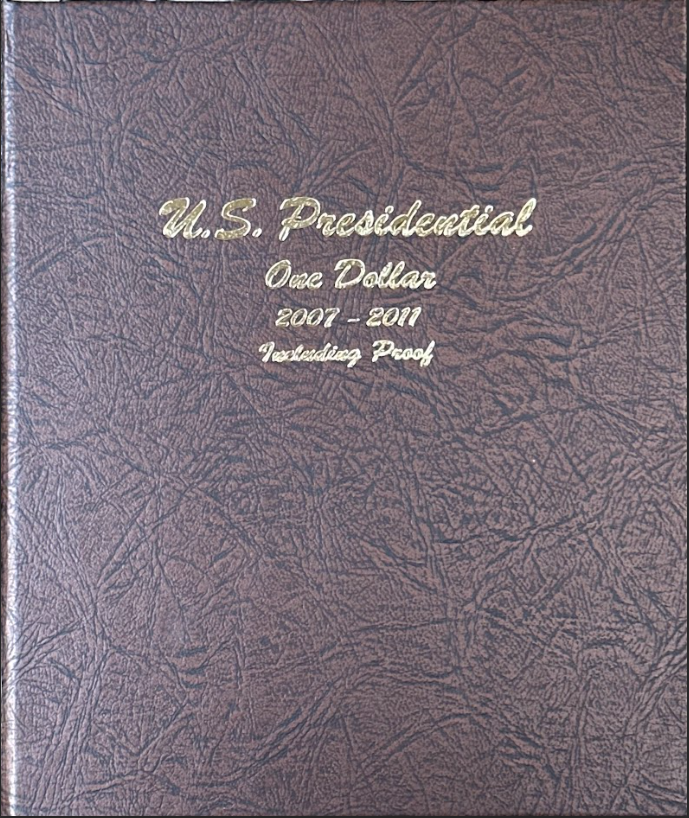
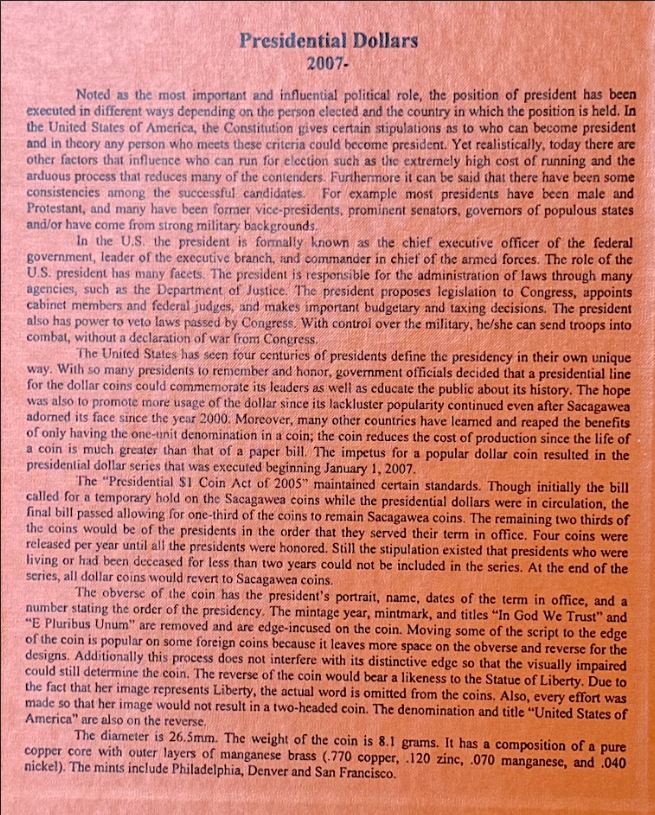
George Washington — 1st President (click to expand)
Also known as the “Father of His Country,” he was the nation’s military commander throughout the Revolutionary War (1775–1783). He was the eldest child of a second marriage, born to moderately wealthy Virginia farmers. He had little formal education and was mainly educated by his father and half brother. At the age of seventeen, he held his first public office as a land surveyor. He fought his first battles in the French and Indian War (1754–1758) serving as a lieutenant colonel. On January 6, 1759, he married Martha Custis, a wealthy landowner. He was the president of the Constitutional Convention that drafted the Constitution of the U.S. and rejected a movement to make him King of the United States. He was the only president to be elected unanimously and who did not live solely in Washington, D.C. during his presidency. He was inaugurated in two cities: New York and Philadelphia. He set a standard of a two-term limit per presidency by refusing to run for a third term. He was 6 feet 2 inches tall and weighed 200 pounds. He did not have children of his own. He is buried in the family vault at Mount Vernon, Virginia.
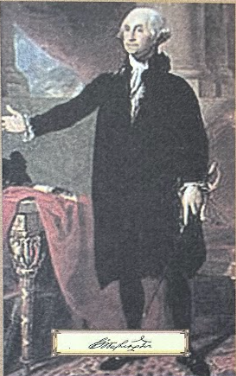
John Adams — 2nd President (click to expand)
Also known as “Atlas of Independence,” he helped draft the Declaration of Independence. He was the son of a farmer and the great grandson of pilgrims who landed at Plymouth Rock in 1620. In 1755, he graduated from Harvard College (like his father before him) and practiced law a few years later. On October 25, 1764, he married Abigail Smith, a strong-minded daughter of a clergyman. A vigorous advocate for independence from Britain, he wrote many anonymous articles on the subject for the “Boston Gazette”. In 1774, he was elected as a delegate from Massachusetts to the Continental Congress. He was a U.S. diplomat in Europe during the Revolutionary War. In 1799, he wrote the Constitution for the state of Massachusetts. He was sworn in as president at the age of 61. He was the first president to live in the White House, then known as the Executive Mansion. He negotiated a treaty with Napoleon Bonaparte in 1800 to prevent war between the U.S. and France. He had 5 children and lived to age 90; long enough to see his eldest son, John Quincy Adams, become president. He died on July 4, 1826, the 50th anniversary of the signing of the Declaration of Independence and the same day Thomas Jefferson died.
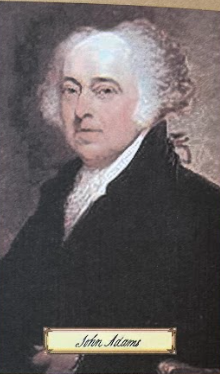
Thomas Jefferson — 3rd President (click to expand)
Also known as the “Man of the People,” he was the principal drafter of the Declaration of Independence. He was the son of a planter and surveyor and his mother was from one of the most eminent families in Virginia. He graduated from the College of William and Mary in 1762 and began practicing law 5 years later. He was an accomplished musician, farmer, lawyer, architect, inventor, naturalist, philosopher and scientist. He entered politics in 1769 when he was elected to the Virginia legislature. On January 1, 1772, he married Martha Wayles Skelton, a rich widow. Of their six children, only two survived past childhood. She died in 1782 and Jefferson never remarried. Jefferson was the Governor of Virginia from 1779–1781; his private library became the start of the Library of Congress, which is now the largest library in the world. He expressed opposition to slavery, but owned slaves all his life. He was sworn in as president at the age of fifty-seven. He organized the Lewis and Clark Expedition and acquired the territory west of the Mississippi known as the Louisiana Purchase. He had red hair and was the founder of the University of Virginia where he served as rector from 1816–1825.
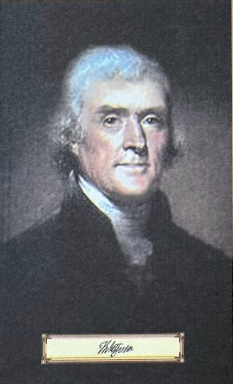
James Madison — 4th President (click to expand)
Called the “Father of the Constitution,” he was known for his influence on the nation’s primary laws. The son of a planter, he grew up on his family’s plantation, Montpelier. In 1771, he graduated from the College of New Jersey (now Princeton University). He helped write the Virginia State Constitution in 1776 and became a member of the Virginia legislature that same year. At age 29, he was the youngest delegate at the Continental Congress. His draft of what was known as the “New Plan” became the foundation for the Constitution. Before he was president, he authored the Bill of Rights amendments to the Constitution. In 1794, he married Dolley Payne Todd, a young and sociable widow. As president, he declared war on Great Britain; this started the War of 1812. In 1814, British troops burned down the Executive Mansion. With architect James Hoban he restored and painted the fire-charred Mansion in white, it henceforth became known as the White House. He was the shortest president at 5 feet 4 inches. Both of his vice presidents died in office. He succeeded Jefferson as the rector to the University of Virginia.
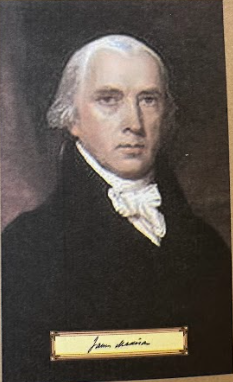
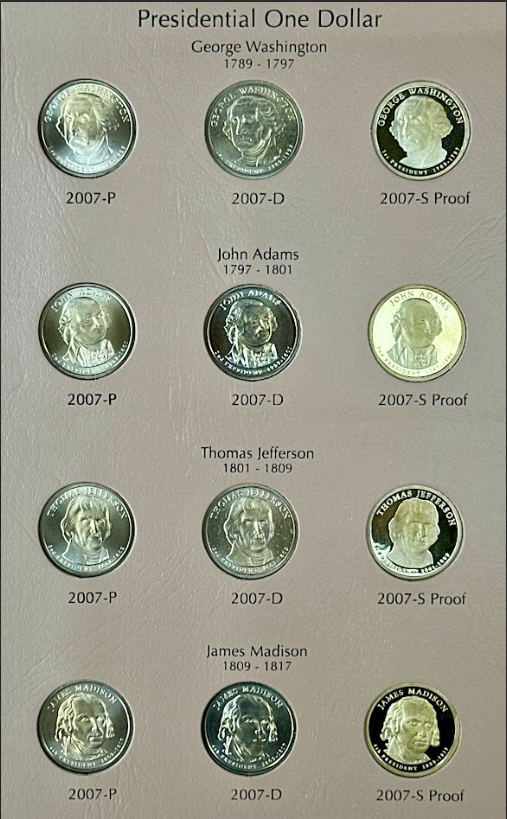
James Monroe — 5th President (click to expand)
Also known as the “Era-of-Good-Feeling President,” in 1820 he ran unopposed for a second term, capturing all but one electoral vote. He was the son of a carpenter and grew up on his family’s small farm. He graduated from the College of William and Mary in 1776. He fought in the Revolutionary War and became a member of the Virginia Legislature in 1782. On February 16, 1786, he married Elizabeth Kortright, a wealthy New Yorker. Before his presidency, he helped negotiate the Louisiana Purchase. As president, he was the first to be inaugurated outdoors because of a dispute over seating in Congress. He adopted the policy of setting aside land for Native Americans in the Great Plains. He signed into law the controversial Missouri Compromise which allowed Missouri to enter the union as a slave state. During his presidency, Florida was obtained from Spain in 1821. Through the Monroe Doctrine, he established that no further colonization of the Americas would occur by Europeans. He was the first president to ride in a steamboat and was the only president to have a foreign capital named after him (Monrovia, Liberia).
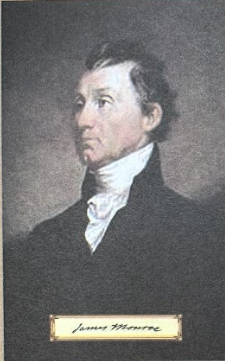
John Quincy Adams — 6th President (click to expand)
Also known as “Old Man Eloquent,” he proposed several national projects such as transportation systems, a university and an observatory. At 14, he served as secretary and interpreter for the U.S. envoy to Russia, a job that would highly prepare him to later become the first U.S. Minister to Russia. By the age of 18, he had spoke 8 languages. He graduated from Harvard and began practicing law in Boston in 1790. Appointed as Secretary of State during the Monroe Presidency, he played integral roles in the acquisition of Florida and the drafting of the Monroe Doctrine. He won the presidency after a lack of a majority vote turned the decision over to the House of Representatives. Most voters did not favor this decision by the House, and Adams received little support from Congress or the people in his attempts to achieve many public works programs. He opposed slavery and defended the freedom of speech. He swam/bathed in the Potomac River almost daily. He kept a pet alligator in the east room of the White House. He negotiated the Treaty of Ghent, which ended the War of 1812. He returned to public office after the presidency in the House of Representatives, in which he served until his death.
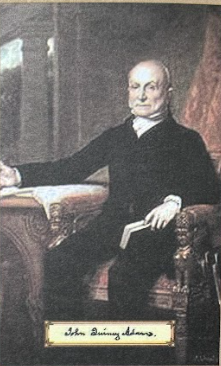
Andrew Jackson — 7th President (click to expand)
Called “Old Hickory,” he was the only president to ever pay off the national debt. By the age of 14 he was orphaned. From 1780–1781, he was a young member of the militia in the Revolutionary War. He was captured and was left with lifelong scars on his body from mistreatment he received after refusing to clean a British officer’s boots. He is the only president that was a prisoner of war. In 1787, he was admitted to the Bar in North Carolina. He was known as a hot-tempered person and fought in numerous duels. In August of 1791, he married Rachel Donelson Robards, a woman who enjoyed pipe smoking as much as he did. They adopted their children. He was known as an Indian fighter and was appointed the first territorial governor of Florida in 1821. His presidential victory was darkened by his wife’s death just before he took office. During his term, fist fights broke out in Congress. He recognized Texas as an independent republic in 1837, and supported Georgia in its efforts to remove the Cherokee from their land. He hosted grand parties at the White House that were open to the public. He served in the Senate after his presidency.
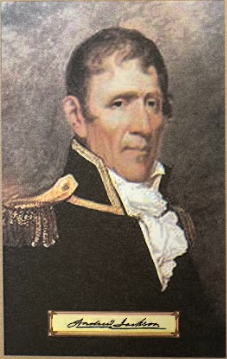
Martin Van Buren — 8th President (click to expand)
Also known as “The Little Magician” and “Old Kinderhook” (origin of the term “O.K.”), he grew up in a Dutch community in New York speaking better Dutch than English. He was the first president born in the United States. He was admitted to the Bar in 1803 at the young age of twenty. On February 21, 1807, he married Hannah Hoes, a distant cousin who bore him four sons and died in 1819. He never remarried. He maintained a commitment to public service and in 1821 he was elected as state senator of New York. He was known as a wily politician, a good dresser, and a man who enjoyed fine wine and food. He easily obtained the presidential nomination with Jackson’s support. His presidency was overshadowed by the Panic of 1837, the first major U.S. economic depression. In 1840, Congress adopted his recommendation for the creation of the independent Treasury System to store and dispense federal funds. He headed a political faction that eventually became the Democratic Party. He limited the workday to ten hours on federal public works projects. He ran for the presidency for a second term but was unsuccessful.
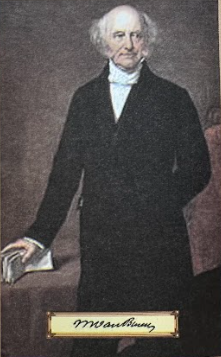
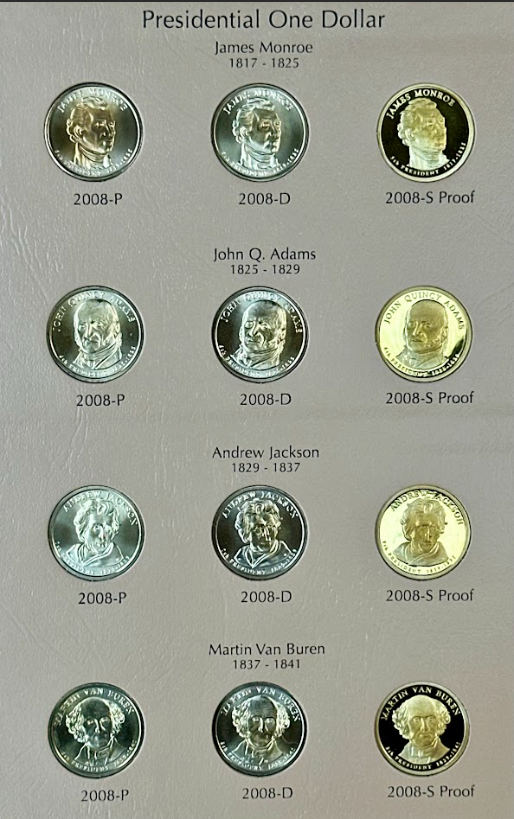
William Henry Harrison — 9th President (click to expand)
Also known as “Old Tippecanoe,” he was the first president to die in office. He was the youngest son of Benjamin Harrison, a signer of the Declaration of Independence. He attended Hampden-Sydney College but never graduated. He was the only president to study to become a doctor; however, he left medical school to join the Indian Wars. By the age of 22, he was promoted to captain and commander of Fort Washington, right on the Indiana border. On November 25, 1795, he married Anna Symmes, daughter of a wealthy landowner. They had ten children. In 1800, President Adams appointed him the first territorial governor of the Indian Territory; this area covered present day IN, IL, WI, and parts of OH and MN. He obtained his nickname by attacking the Shawnee and their allies at the Battle of Tippecanoe; the victory resulted in the official acquisition of 3 million acres of land from the Indians. He was the first to launch a presidential election campaign and slogan—“Tippecanoe and Tyler, too!” He died of pneumonia 32 days after his inauguration (the shortest term ever). He gave the longest inaugural speech, which lasted 1 hour and 45 minutes.
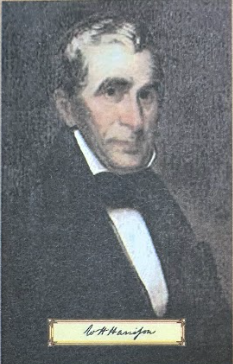
John Tyler — 10th President (click to expand)
Also known as “The Accidental President,” he graduated from the College of William and Mary in 1807 and was admitted to the Bar two years later at the age of nineteen. In 1811, he was elected to the Virginia Legislature. On March 29, 1813, he married Letitia Christian who bore him eight children and died in the White House after almost thirty years of marriage. In 1825, he became governor of Virginia, and in 1837 he became a senator. He was nominated for the vice presidency by the Whigs, and less than a month after the Harrison-Tyler victory, he became the first vice president to assume the presidency because of the death of a president. As president, he vetoed much legislation which made him unpopular with the Whigs. There was an unsuccessful attempt to have him impeached (the first attempt of its kind). He established the boundary between Maine and Canada and opened Asia to U.S. trade. On June 26, 1844, he married twenty-three-year-old Julia Gardiner, a New York socialite who bore him seven children. Tyler fathered more children than any other president. He enjoyed writing poetry and playing the violin.
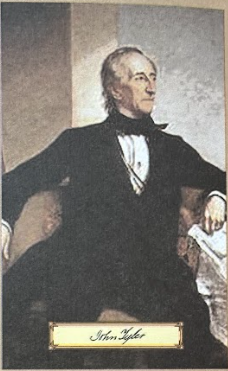
James Knox Polk — 11th President (click to expand)
Also known as “Young Hickory,” he was the son of Scottish-Irish parents who moved to Tennessee when he was young. Born an unhealthy youth, he was diagnosed at the age of 17 with gallstones and survived an operation without anesthetics, being held down by his father. In 1818, he graduated with honors from the University of North Carolina. He studied law in Tennessee and was admitted to the bar in 1820. He was elected to the state legislature of Tennessee in 1823. On January 1, 1824, he married Sarah Childress, a social twenty-year-old and daughter of a wealthy businessman. They had no children. He was elected governor of Tennessee in 1839. His presidential nomination was made via Morse’s telegraph, the first use of its kind in politics. With former President Jackson’s aid, he won the presidency by a narrow margin at the age of forty-nine. He was president during the Mexican American War and the California Gold Rush. He obtained the most land for the United States since the Louisiana Purchase, acquiring most of present day AZ, CA, CO, NV, NM, UT and WY. He was the first president to have his photograph taken. He died from cholera in Nashville, Tennessee, three months after leaving office.

Zachary Taylor — 12th President (click to expand)
Also known as “Old Rough and Ready” for his informal dress, he received no formal education and was raised on the Kentucky frontier. He served in the army for forty years and rose in rank while he fought many battles against Indians. On June 21, 1810, he married Margaret Mackall Smith who bore him six children. He was a hero of the Mexican American War (1846–1848) because he led his outnumbered troops to victory over Mexican President Santa Ana’s troops at the battle of Buena Vista. He had no previous political experience, but his victory got him the Whig nomination for the presidency. In 1848 he became president at the age of 62. He did not vote in any election before he ran for president. He was an advocate of the agricultural sector and supported the development of a transcontinental railroad. He was the second president to die in office. He died at the White House on July 9, 1850, of gastroenteritis.
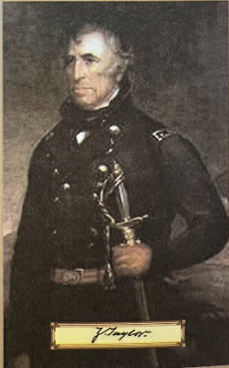
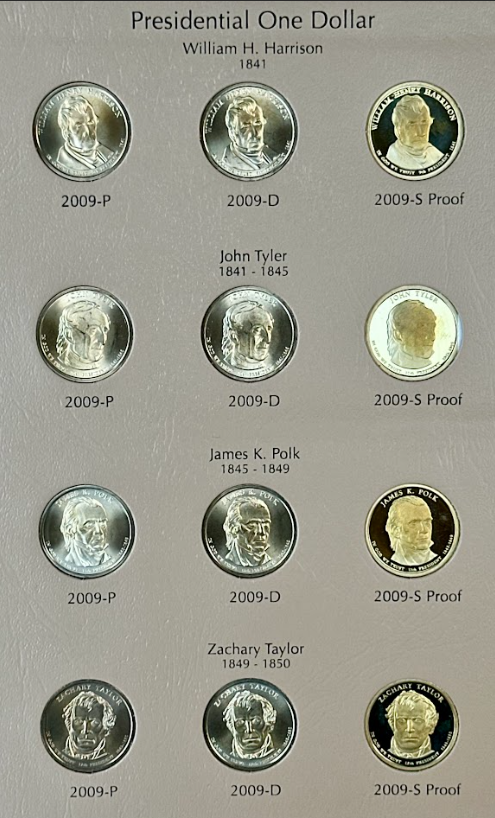
Millard Fillmore — 13th President (click to expand)
Also known as “The American Louis Philippe,” he was the son of a poor farmer who grew up in New York State and assisted with the farm’s chores. At the age of fourteen, he was apprenticed to a cloth maker to obtain enough money for his large family. He had no formal education managed to educate himself with the assistance of a village schoolteacher, Abigail Powers. He became a schoolteacher and later studied law. At age 28, he was elected to the New York state legislature. In 1833, he began his political career as a U.S. representative from New York. He received the vice-presidential nomination at the Whig National convention in 1848 and took this office in 1849. Upon Taylor’s death, Fillmore was sworn in and he then appointed a new Cabinet. He signed a series of bills known as the Compromise of 1850, which dealt with the brewing issues of slavery. He and his wife installed many firsts in the White House such as a library, a bathtub and a kitchen stove. He ran again in 1856 under an anti-immigration party but was defeated.
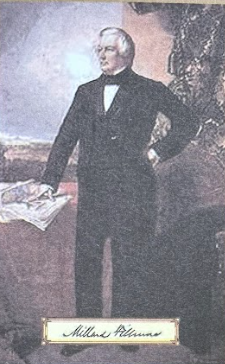
Franklin Pierce — 14th President (click to expand)
Also known as “Young Hickory of the Granite Hills,” he was the son of a veteran of the Revolutionary War who provided him with a fine education. He graduated from Bowdoin College in 1824. He was admitted to the New Hampshire Bar in 1827. In 1833, at the age of 29, he was elected as a U.S. representative from the same state. On November 10, 1834, he married Jane Means Appleton, who suffered from poor health and little, if any, interest in politics. Pierce led an almost-bachelor life and developed a drinking problem. His 3 young children died before he became president. He was elected a senator from NH in 1837. His presidential campaign slogan was “We Polked you in 1844, we shall Pierce you in 1852.”Due to religious convictions, he affirmed, instead of swore, the Presidential Oath of Office. He was the first president to deliver his inaugural address from memory. As President, he failed to purchase Cuba from Spain but obtained parts of AZ and NM from Mexico. He signed the Kansas-Nebraska Act in 1854, which allowed voters of the newly acquired territories to permit slavery. He believed the constitution endorsed slaver and outwardly spoke against abolinionists—a viewpoint which made him highly unpopular.
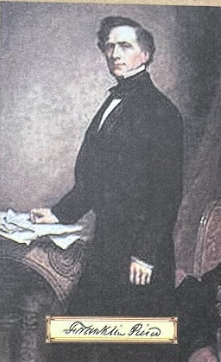
James Buchannan — 15th President (click to expand)
Also known as “Old Buck,” he was the son of an Irish immigrant father and was raised in rural Pennsylvania. He graduated from Dickinson College in 1809 and soon thereafter began to study law. He fought in the War of 1812 and was elected to the Pennsylvania legislature in 1814 upon his return from war. He was engaged at one point in his life to Ann Coleman, the daughter of a very wealthy Lancaster family that did not approve of him. He never married and was the only unmarried man to become president. He was appointed as U.S. Minister to Russia in 1831 and served as Secretary of State under President Polk in 1845. He personally believed that slavery was wrong but also believed the Constitution should protect existing slavery. During his term, the country suffered a brief economic depression known as the panic of 1857, and the Dred Scott decision, which stated that slaves were not persons but forever property, was passed. He recommended a pro-slavery Kansas constitution but this was rejected. In 1861, at the end of his presidency, the Confederate States (seven) declared their independence as a new nation.
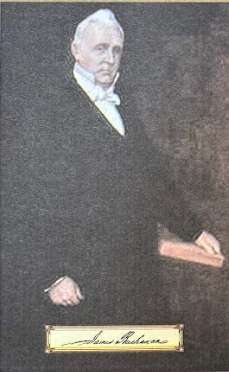
Abraham Lincoln — 16th President (click to expand)
Also known as “Honest Abe” and “Illinois Rail-Splitter,” he is considered by many as the greatest president. The son of a carpenter and frontiersman, he had little formal education. He worked many odd jobs while growing up and when he became interested in law, he walked from Springfield to New Salem, Illinois to borrow books to study. He successfully ran for the state legislature at the age of 25 and was accepted to the Bar in 1836. On November 4, 1842, he married Mary Todd, who bore him four sons. In 1858, he gave a legendary acceptance speech for the U.S Senate in which he stated, “A house divided against itself cannot stand.” The Lincoln-Douglas debates and his speeches on the issue of slavery eventually brought him the presidential nomination. As president, he was faced with the recent secession of eleven states from the Union; these formed the Confederate States of America. A formidable leader during the Civil War, he issued the Emancipation Proclamation in 1863 which declared that all slaves were free. He gave the Gettysburg Address in November of 1863. The speech became one of the most important and commonly quoted presidential speeches in U.S. history. He was the tallest president at 6 feet 4 inches. He was the first president to be assassinated; John Wilkes Booth shot him at Ford’s Theater on April 14, 1865.
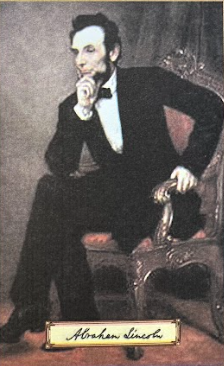
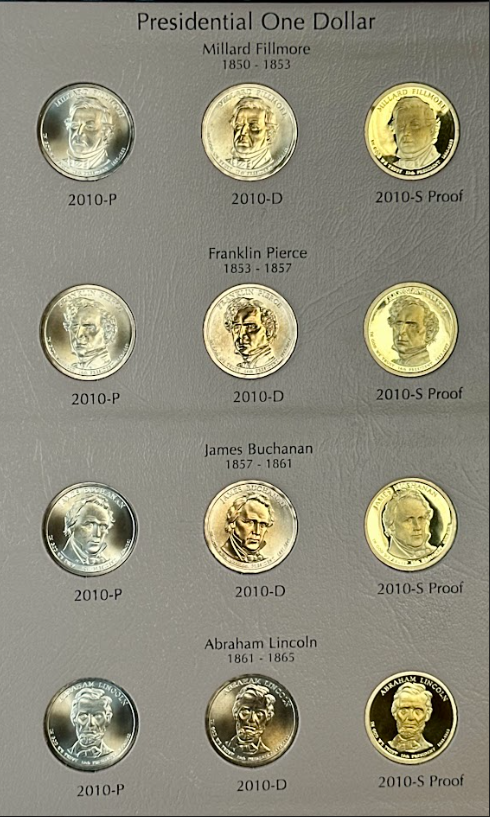
Andrew Johnson — 17th President (click to expand)
He assumed the presidency after Lincoln’s assassination and after the Civil War ended, issued the Amnesty Proclamation which pardoned many Confederates. The son of a porter, Johnson was born into a poor family. He was apprenticed to a tailor at the age of ten. He eventually opened his own shop in Greenville, Tennessee; a shop which still stands today. He never had a formal education. On May 17, 1827, he married Eliza McCardle, the woman who helped him improve his reading and taught him writing and math. They had 5 children. An avid orator, he won the respect of Greenville and was elected alderman and eventually mayor, in 1834. He was known as an advocate of the common man. He was elected to the Tennessee House of Representatives in 1835 and again in 1839. His political career continued, serving as a senator, a U.S. representative and a governor. He was against secession and for this was seen as a traitor by the south. During his term, the 13th amendment, which officially abolished slavery, was ratified. Also, Alaska was purchased from Russia in 1867 for 7.2 million dollars. He died of a stroke at the age of sixty-six.
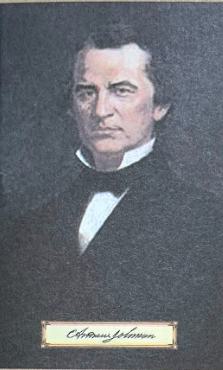
Ulysses Simpson Grant — 18th President (click to expand)
Also known as “Hero of Appomattox,”he was once fined $20 dollars for speeding with a horse and carriage. His birth name was Hiram Ulysses, but when he was misregistered as Ulysses Simpson at West Point Academy in 1839, he never corrected the error and kept his new name. The son of a tanner and farmer, he grew up working on his father’s farm. He fought in the Mexican War (1846-1848) where he became a first lieutenant. On August 22, 1848, he married Julia Dent, who bore him 4 childre. He was dismissed as captain due to his heavy drinking. He then became a storekeeper until he volunteered to defend the Union in the Civil War. He rose in rank and became a general and a national hero. Due to his leadership and success against the Confederate Army led by Robert E. Lee, he unanimously won the republican nomination for president. Scandal, corrupt politicians and a depression clouded his presidency. Still, he saved the stock market from collapse in 1869 and ensured the voting rights of blacks by signing the Force Acts of 1870 and 1871. He died of throat cancer (he was a heavy cigar smoker) but first managed to complete and publish his memoirs.
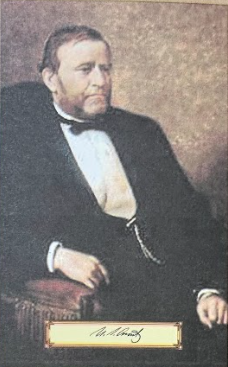
Rutherford Birchard Hayes — 19th President (click to expand)
Also known as “Rud” in his childhood years and later as “Dark-Horse President,” he ended the Reconstruction period after the Civil War by withdrawing federal troops from South Carolina and Louisiana in 1877. The son of a merchant, he grew up with his widowed mother. He graduated from Kenyon College in 1842 and Harvard Law School in 1845; he was the first president to graduate from law school. On December 30, 1852, he married Lucy Ware Webb, later known as “Lemonade Lucy” because she did not allow alcohol to be served in the White House. He was elected as U.S. representative from Ohio in 1865 as well as Governor of Ohio in 1968 and again in 1876. He did not win the popular vote for the presidency but was elected by the Electoral College. During his presidency, he was a strong advocate for civil service reform and forbade federal workers to manage campaigns for politicians. Also, railroad workers held the first national strike and Alexander Graham Bell installed the first telephone in the White House. In September of 1880, he became the first president to visit the west coast.
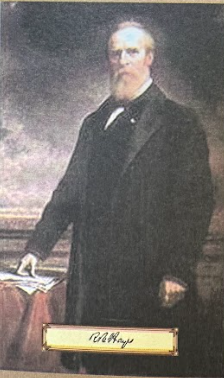
James Abram Garfield — 20th President (click to expand)
He was ambidextrous and could write in Greek with one hand while writing in Latin with the other. The son of a farmer, he was the youngest of five children and the last president to be born in a log cabin. He was a self-driven and religious young man and held different jobs while growing up—he was a sailor, a tow boy, a carpenter’s aide, and a tutor. He graduated from Williams College in 1856. On November 11, 1858, he married Lucretia Rudolph, a former classmate and childhood friend. He was elected to the Ohio state senate in 1859. He rose in ranks to major general during the Civil War and was elected to Congress in 1862, where he remained for 17 years. During his presidency, he strengthened the federal authority over the New York Custom House, the main entryway for foreign goods to the U.S. He was in office less than five months and was the second president to be assassinated. Charles J. Guiteau, a disappointed job seeker, shot him twice while he entered a railroad station in Washington D.C. He died two months later of blood poisoning caused by repeated probing for bullets with non-sterile instruments.
